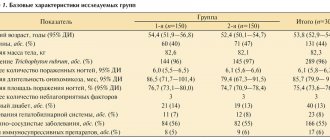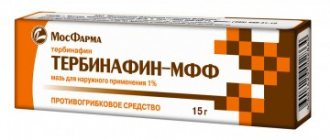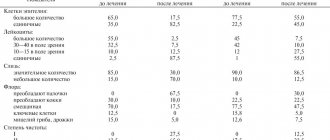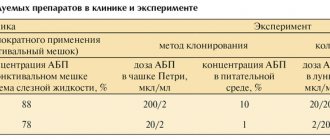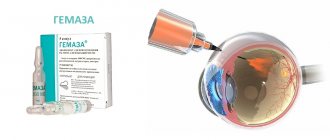Thrush or vaginal candidiasis is a disease that is encountered quite often today. Moreover, it occurs in both men and women. The difference is that in women it manifests itself with severe symptoms, while a man can only be a carrier, without characteristic signs. The causative agent of the disease is the diploid fungus Candida. This fungus exists in the body of every person, but favorable conditions, decreased immunity, and a number of other factors provoke its proliferation. The consequence of which is the disease thrush. In the article we talk about the causes, symptoms of thrush, as well as the popular treatment “Flucostat”.
How it works
Flucostat affects many microorganisms:
- candida;
- cryptococks;
- microspores;
- trichophytons;
- blastomycetes;
- coccidioides immitis;
- histoplasma.
The drug is well absorbed by the intestines. Half an hour after administration, the maximum concentration is already reached. The substance penetrates into all systems and organs. Excreted in urine.
Flucostat
FLUKOSTAT® is a systemic antifungal drug for the treatment of thrush.
Advantages of the brand
- long history of use, supported by positive experience of use and the trust of millions of women in Russia
- proven and confirmed equivalence to the original Western drug1
- production in a plant standardized according to European quality standards EU GMP2
- affordable price for a wide range of consumers3
Advantages of the molecule
- wide spectrum of antifungal activity
- the ability to inhibit the growth and reproduction of fungi of the genus Candida, especially Candia albicans - the main causative agents of genital candidiasis (“thrush”)
- favorable pharmacokinetic characteristics:
- bioavailability when taken orally is comparable to intravenous administration;
- high degree of distribution in tissues and environments of the body (including the ability to create and maintain high therapeutic concentrations in vaginal tissues and vaginal secretions)4;
- prolonged therapeutic effect and long-term protective effect.
- achieving maximum concentrations in the vaginal mucosa and vaginal secretions within 2 hours after administration7*
- onset of reduction in clinical symptoms on average within 24 hours after taking one capsule at a dosage of 150 mg8
- the average time for symptom regression is 2 days8
- just one capsule at a dosage of 150 mg is sufficient to eliminate the symptoms of “thrush” in most women with an uncomplicated form of acute vulvovaginal candidiasis
- a single oral dose of a 150 mg capsule is comparable to a weekly course of therapy with some intravaginal anti-thrush agents9**
Advantages of the release form (capsules for oral administration)
Systemic distribution into most tissues, organs and biological fluids of the body creates high concentrations in them, which contributes to:
- elimination of fungal cells not only from the surface of the vaginal mucosa, including microfolds, but also throughout its entire thickness7
- eliminating the pathogens of “thrush” not only in the genital tract, but also in other possible places of their habitat - the oral mucosa and intestines, thereby minimizing the risk of re-exacerbation of the disease after treatment8
convenience and comfort during the treatment process:
- possibility of starting treatment on any day of the menstrual cycle, including menstruation
- the ability to take the capsule at any time of the day - day or night
- the possibility of taking the drug regardless of the diet - on an empty stomach, during or after meals (simultaneous food intake and increased acidity do not have a significant effect on the absorption and therapeutic effect of the drug)
- the possibility of taking the drug regardless of the method of contraception used - fluconazole does not violate the integrity of latex contraceptives when it comes to using a condom or diaphragm, and also does not reduce the level of estradiol, which is the main component of oral contraceptives
- simplicity and ease of the process of taking the drug - all that is required is to take the capsule out of the blister and swallow it with the required amount of water
- in most cases, it is enough to take just 1 capsule of the drug per course
Indications for use
- treatment of acute vaginal candidiasis, when local therapy is not applicable.
Contraindications
- Hypersensitivity to fluconazole and other components of the drug
- Children under 18 years old
- Lactation period (see the instructions section “Use during pregnancy and breastfeeding”
For more details, see the instructions for medical use of the drug.
When is it prescribed?
The drug is prescribed in the following conditions:
- mycosis;
- pityriasis versicolor;
- cryptococcosis;
- onychomycosis;
- candidiasis;
- prevention of fungal diseases;
- thrush;
- fungal infections after chemotherapy.
The drug is also prescribed as a prophylaxis during treatment with antibiotics.
Recommendations for selection
Only a doctor can select a suitable antifungal agent and prescribe a regimen for how to take it. To prescribe a particular medicine, a diagnosis must be established. The patient is prescribed an examination: taking scrapings, cultural examination, bacterial culture, etc.
After receiving the results, a decision is made on the treatment regimen and the choice of medication. The difference between Flucostat and Fluconazole is not fundamental, which allows the use of either of them for the treatment of thrush . The drugs have a significant difference in price, so the choice is often made in favor of the drug that costs several times less.
The risk of developing thrush increases with the following factors:
- antibiotic treatment;
- sexual transmission of infection;
- decreased immunity;
- wearing unsuitable underwear (compressive synthetic);
- violation of hygiene rules.
Fungal diseases cause discomfort, affect quality of life and require intensive treatment with antifungal drugs such as Fluconazole or Flucostat.
Simple recommendations will help protect the body and in many cases prevent infection:
- compliance with the rules of intimate hygiene;
- use of a personal towel and special shoes in the pool;
- disinfection of equipment in beauty salons;
- do not overcool;
- do not have close contact with infected people;
- carry out sanitary treatment of the bathroom and the bath itself;
- periodically treat shoes with an aqueous solution of acetic acid or formaldehyde;
- use barrier contraception.
It makes no sense to take Fluconazole together with Flucostat, since their action and effectiveness against mycoses and candidiasis are similar.
Who should not take it
The drug is contraindicated:
- children under three years old;
- with galactosemia;
- with increased sensitivity;
- with lactose intolerance;
- with renal failure;
- with liver failure;
- with alcohol addiction;
- during treatment with hepatoxic drugs;
- with extensive arrhythmia.
Sometimes unpleasant actions occur during treatment.
Side effects
Side effects appear as:
- nausea;
- diarrhea;
- flatulence;
- dizziness;
- headache;
- thrombocytopenia;
- allergies;
- reduction of leukocytes.
When administered intravenously, side effects occur:
- nausea and vomiting;
- migraine;
- convulsions;
- abdominal pain;
- liver failure;
- arrhythmia;
- decreased potassium levels in the blood;
- increased triglycerides;
- hair loss;
- kidney dysfunction.
If such phenomena occur, stop taking it and consult a doctor.
Comparison of drugs
When choosing a medicine, you need to find the answer to the question of how Flucostat differs from Fluconazole, which of them is more effective, cheaper, has fewer side effects and effects and, ultimately, is better.
Efficiency
Both of these drugs are based on the same active ingredient. They are often prescribed for thrush. In this case, both one drug and the other are effective. In many cases, Flucostat is prescribed for the acute course of the disease, and Fluconazole is prescribed for relapses and slow progression of the disease, or in combination with antibiotics.
Whichever of these agents, Flucostat or Fluconazole, is chosen, it will act quickly enough . But it is important not to interrupt the prescribed course and complete the treatment to avoid relapse. While fighting pathogenic fungi, the drugs do not have a negative effect on the intestinal microflora and cannot lead to dysbacteriosis.
The effectiveness of the products is not affected by the time of administration, and there is no dependence on food intake. But for best results, taking the capsule or tablet should be accompanied by drinking plenty of water.
If there is a recurrence of thrush, then Fluconazole, like Flucostat, may show its ineffectiveness due to the body’s addiction. There may also be isolated cases in which neither one nor the other drug helps. This is very rare and can be explained by the individual characteristics of the body.
Side effects and contraindications
Both drugs, Fluconazole and Flucostat, like their analogues, have similar side effects.
Among them:
- insomnia;
- headache;
- kidney dysfunction;
- arrhythmia, problems with the functioning of the heart and blood vessels;
- allergic reactions;
- nausea and other gastrointestinal disorders.
For your information! Contraindications for these two drugs are due to the presence of the same active substance.
Contraindications for taking Fluconazole and Flucostat include the following conditions:
- pregnancy;
- age up to three years;
- individual intolerance;
- breastfeeding.
comparison table
The difference between Flucostat and Fluconazole is not too big, which can be clearly seen in the table.
Comparison options | Flucostat | Fluconazole |
| Active substance | fluconazole | |
| Manufacturer country | Russia (using foreign production technology) | Russia |
| Prescription depending on the intensity of the disease | Acute form | Relapse or slow progression |
| Price, rub. (7 capsules of 50 mg each) | From 320 | From 35 |
| Price, rub. (1 capsule 150 mg) | From 180 | From 10 |
| Oral release form | capsules | |
| Side effects | the same | |
| Effect on intestinal dysbiosis | No | No |
| Food addiction | No | No |
| Reception for hepatitis or cirrhosis | Carefully | |
| Relapse rate after use | Below | Higher |
| addictive | Yes | Yes |
| Use during pregnancy | Not recommended as it can lead to fetal development pathologies | |
There are some differences in the production of the capsule shell of both drugs and in relation to the inclusion of excipients, which do not affect the bioavailability and do not reduce the overall effectiveness.
Flucostat contains the following excipients that are not found in Fluconazole:
- lactose – milk substitute;
- sodium lauryl sulfate – a substance used in pharmacology and household chemicals;
- silicon dioxide, which is used in powder mixtures as a gliding agent.
Treatment of vaginal candidiasis with both drugs can be carried out according to various schemes:
- This can be a single dose of 150 mg for the primary disease or for rare exacerbations (up to 3 times a year);
- Two times 150 mg, three days apart. This scheme is chosen in case of a complicated course of the disease;
- Three times 150 mg on the 1st, 4th and 7th day. This approach to treatment is intended for frequent relapses.
In this case, the choice of drug is not important. This can be either Fluconazole or Flucostat.
How to use
Capsules are swallowed with water, regardless of meals. For fungal infections of the oral mucosa, take fifty to one hundred milligrams once a day for two weeks. The capsule is not opened so as not to disrupt the dosage.
For vaginal thrush, take 150 milligrams once. For the prevention of intestinal and vaginal candidiasis during antibiotic treatment, the drug is prescribed on the seventh, fourteenth day.
For cryptococcal diseases, take 400 milligrams one day, then exactly half the dose for two weeks every day. For pityriasis versicolor, drink fifty milligrams once a month.
For onychomycosis, take 150 milligrams once a week.
Sometimes antibacterial drugs are added to increase the effectiveness of therapy.
For candidiasis in children, the dose is calculated to be 6 milligrams per kilogram of weight. This dose is taken one day, then half until the symptoms disappear.
For prevention, a dose is prescribed at the rate of 3 milligrams per kilogram of the child’s weight once.
- When treating thrush in women, the sexual partner is also treated. He is given 150 milligrams of the drug once.
- For vaginal candidiasis, suppositories are used along with capsules. They eliminate such unpleasant phenomena as: pain when urinating, itching of the genitals, discomfort during sexual intercourse.
Suppositories are placed in the vagina and can be used during menstruation. The duration of treatment is prescribed by the doctor. Side effects when using suppositories are observed much less frequently.
During an overdose caused by a violation of proper use, there are paranoid manifestations and hallucinations. In such cases, the stomach is washed and hemodialysis is prescribed.
Reasons for the development of thrush
There are many reasons for the development of thrush. At the same time, there are a number of main factors that have a strong influence on the microflora and thereby provoke the appearance of thrush:
- Antibiotics;
- acute respiratory viral infections and food poisoning;
- stressful conditions;
- chronic diseases of the reproductive system;
- hormonal changes;
- endocrine diseases;
- reaction to underwear and intimate hygiene products;
- poor nutrition;
- sudden climate change.
Symptoms of thrush
You can notice thrush in the early stages of the disease:
- the discharge becomes more abundant and acquires a cheesy consistency;
- irritation and swelling of the genital mucosa appears;
- During sexual intercourse and urination, discomfort is clearly felt - burning, itching.
Compatibility
During treatment with flucostat, you should not drink alcohol. Violation of this condition can lead to serious consequences, including death. You should not take flucostat simultaneously with drugs that are hard on the liver. This can cause serious poisoning and liver dysfunction.
Do not take the drug simultaneously with blood thinning medications. Oral contraceptives reduce the effect of flucostat.
During pregnancy, the drug is prescribed only if the benefit to the mother outweighs the risk to the fetus. Because the drug affects the liver and is absorbed into the blood, penetrating the placenta. A similar effect is observed in nursing mothers. The substance passes easily into breast milk. Therefore, it is not recommended to take the drug during breastfeeding.
Special Recommendations
Patients diagnosed with AIDS may develop a rash from taking Flucostat. In this case, you should immediately stop taking the drug, since in such patients the skin reactions are more severe. If the rash appears in other people, close monitoring should be initiated. If the rash does not progress to the stage of formation of bullous lesions, treatment can be continued. In addition, Flucostat should be taken with extreme caution when taking drugs that are metabolized by isoenzymes of the cytochrome P450 system.
Flucostat and antibiotics
Although antibiotics can cause thrush, they may also be necessary for treatment. The dosage and duration of the course are determined based on an analysis of the patient’s condition and the stage of the disease.
Antibiotics are prescribed to completely eradicate the infection. At the same time, it is important to strictly adhere to the course of taking medications. Taking Fluyucostat should be started no earlier than 2-5 days after starting the antibiotic. It is also important to maintain a certain hourly interval between taking antibiotics and Flucostat.
Flucostat can also be prescribed after a course of antibiotics as a prophylactic agent. The preventive course lasts no more than 2 weeks. Usually 150-250 mg of the drug is prescribed.
Flucostat and its effect on the body
In addition to the fact that Flucostat negatively affects the functioning of the kidneys and liver, the negative effects of the drug can also affect the patient’s general well-being. This can be expressed in gastrointestinal disorders, dizziness, and the appearance of a rash. In addition, the drug has a strong effect on the hematopoietic system, which can lead to blood diseases.
Flucostat and its effect on sexual intercourse
The effect of the drug is usually observed within 2 days after administration. However, it is not recommended to resume sexual activity earlier than after a month. The best solution would be to have repeat smears and return to sexual activity after receiving a positive smear test result.
Flucostat and menstruation
Menstruation with thrush can cause the condition to worsen. During menstruation, the vaginal microflora becomes favorable for the development of fungus. This is why it is important to continue taking the drug during this time. Flucostat does not affect the cycle in any way. It does not apply to hormonal drugs. Increased discharge is possible, as the product provokes a decrease in potassium content.
Flucostat today is one of the most effective means in the fight against thrush and other fungal infections. But it should be taken strictly as prescribed by a specialist.
Analogs
There are drugs with similar effects:
- medoflucon;
- Vfend;
- itracon;
- mycosist;
- mycomax;
- irunin;
- orungal;
- mycoflucan;
- fluconazole.
All of these medications have antifungal effects. The only difference is the price, auxiliary components, and country of production. Among domestic drugs – Fluconazole. It is cheaper than Flucostat, but the effect is similar.
Is it possible to take Flucostat during pregnancy?
A pregnant woman must discuss taking any medications with her doctor, especially in the first trimester, when the child’s physical characteristics are just developing. There have been no special studies of the use of the drug in pregnant women on the basis of which it would be possible to draw a conclusion about the effects of fluconazole. However, statistics have shown that a single dose of Flucostat capsule at a dosage of 150 mg did not lead to undesirable consequences for the child.
At the same time, there is evidence indicating that the use of high doses of Flucostat (from 400 mg) several times throughout pregnancy led to the development of deformities in the fetus.

